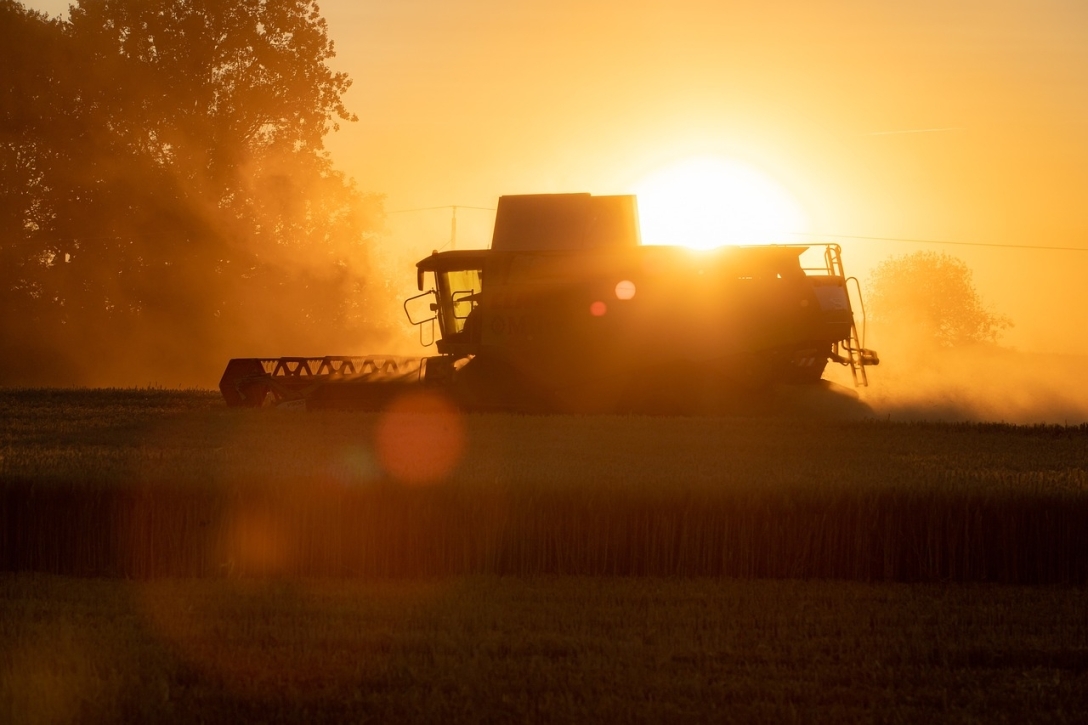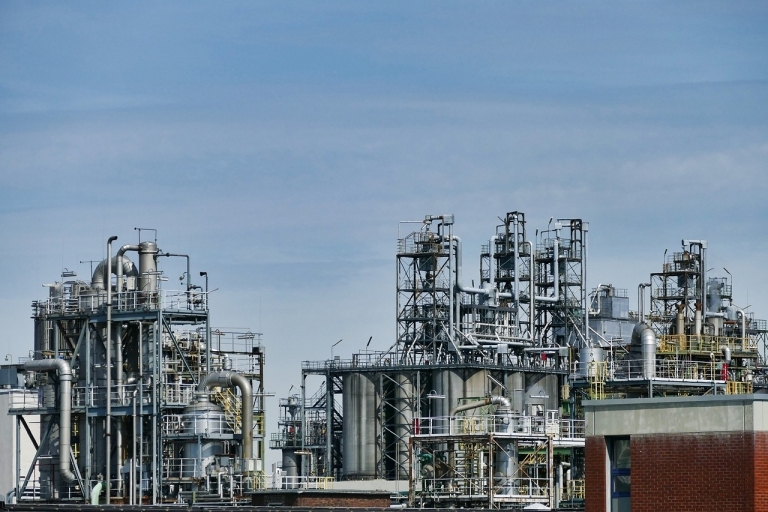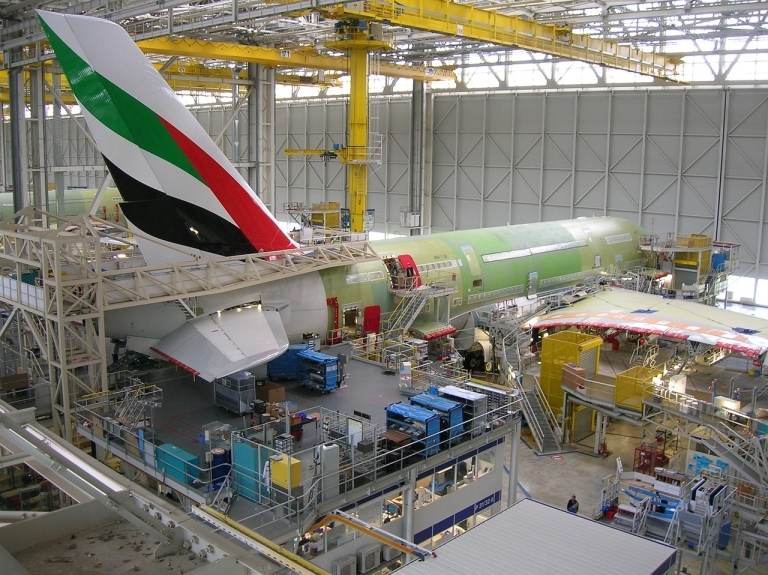Overview of AI in agriculture and its impact
In recent years, the world has witnessed remarkable advancements in technology, and one field that has greatly benefited from these developments is agriculture. AI (Artificial Intelligence), once a concept confined to science fiction, has now become an integral part of the agricultural industry, revolutionizing the way farming is done. By leveraging the power of AI, farmers and researchers are unlocking new possibilities and driving unprecedented levels of efficiency and productivity.
The impact of AI in agriculture cannot be overstated. Through intelligent algorithms and sophisticated data analysis, AI systems are transforming traditional farming methods, enabling farmers to make informed decisions, optimize resource utilization, and maximize crop yields. This has the potential to address key challenges faced by the industry, such as feeding a growing global population, mitigating the effects of climate change, and ensuring sustainable agricultural practices.
Benefits of AI in Agriculture
Increased Efficiency
One of the primary benefits of integrating AI into agriculture is the significant increase in efficiency. By automating various tasks and processes, AI systems streamline operations, reducing the time and effort required to carry out essential farming activities. For instance, AI-powered robots can perform labor-intensive tasks like planting, harvesting, and weeding with precision and speed, saving valuable time for farmers. This newfound efficiency translates into higher productivity and reduced labor costs, allowing farmers to focus on other critical aspects of their operations.
Precision Farming
AI is also revolutionizing the concept of precision farming, enabling farmers to optimize their use of resources and minimize waste. Through the integration of sensors, drones, and satellite imagery, AI systems can monitor and analyze data related to soil composition, moisture levels, and crop health. This real-time information empowers farmers to make data-driven decisions about irrigation, fertilization, and pest control, ensuring that resources are applied precisely where and when they are needed. The result is a more targeted and sustainable approach to farming, reducing the environmental impact and maximizing crop yields.
Crop Monitoring and Yield Prediction
With the help of AI, farmers can now monitor their crops more effectively and predict yields with greater accuracy. By analyzing data collected from sensors, drones, and satellites, AI algorithms can assess crop health, identify early signs of disease or nutrient deficiencies, and even predict yield potential. This proactive approach allows farmers to take timely action, preventing crop losses and optimizing harvest planning. Moreover, AI systems can continuously learn and adapt based on historical and real-time data, improving their predictive capabilities over time.
Pest and Disease Management
Pest and disease outbreaks pose significant risks to crop production and can lead to substantial losses for farmers. However, AI is playing a crucial role in revolutionizing pest and disease management in agriculture. By leveraging image recognition and machine learning algorithms, AI systems can identify and classify pests, diseases, and weeds accurately. This early detection enables farmers to intervene promptly, implementing targeted interventions and reducing the need for widespread pesticide use. Consequently, AI not only minimizes crop losses but also promotes sustainable farming practices by reducing chemical inputs.
Resource Optimization
AI is instrumental in optimizing the use of resources in agriculture, helping farmers achieve more with less. By analyzing data on weather patterns, soil conditions, and historical yield data, AI systems can recommend optimal planting schedules, crop rotations, and even the best crop varieties for specific conditions. This data-driven approach ensures that resources such as water, fertilizers, and pesticides are utilized efficiently, reducing waste and environmental impact. Additionally, AI-driven predictive models can assist farmers in managing inventory, optimizing supply chains, and reducing post-harvest losses.
Stay tuned for the next section, where we will explore the diverse applications of AI in agriculture, ranging from robotics and automation to machine learning and data analysis!
Benefits of AI in Agriculture
As technology continues to advance, AI has emerged as a game-changer in various industries. One such field that is witnessing the transformative power of AI is agriculture. From increasing efficiency to optimizing resources, AI is revolutionizing the way we cultivate and produce food.
Increased Efficiency
In traditional farming methods, farmers often rely on manual labor and guesswork to carry out various tasks. However, with the integration of AI, farmers can now streamline their operations and achieve higher levels of efficiency. By leveraging AI-powered tools and algorithms, farmers can automate routine tasks, saving time and effort. This allows them to focus on more strategic aspects of their work, such as decision-making and planning.
Precision Farming
Precision farming is another significant benefit of AI in agriculture. By utilizing AI-driven technologies, farmers can precisely monitor and manage their crops. Through the use of sensors, drones, and satellite imagery, AI can gather real-time data on soil conditions, weather patterns, and crop health. This information enables farmers to make data-driven decisions, such as adjusting irrigation schedules, applying fertilizers, or deploying pesticides only when necessary. By targeting specific areas that require attention, precision farming not only reduces waste but also improves crop yields.
Crop Monitoring and Yield Prediction
AI plays a crucial role in crop monitoring and yield prediction. With the help of computer vision and machine learning algorithms, AI can analyze vast amounts of data derived from sensors and images. This allows farmers to monitor crop growth, detect diseases or pest infestations early on, and take prompt action to mitigate potential risks. Furthermore, AI can predict crop yields based on historical data and environmental factors. This knowledge aids farmers in planning their resources effectively, optimizing their harvest, and ensuring food security.
Pest and Disease Management
One of the most significant challenges faced by farmers is controlling pests and diseases that can devastate crops. AI offers innovative solutions by integrating image recognition and data analysis techniques. By analyzing images of plants and leaves, AI algorithms can identify early signs of diseases or pest attacks. This early detection enables farmers to take immediate preventive measures, such as targeted treatments or implementing biological controls. As a result, AI helps minimize crop losses and reduce the need for excessive chemical interventions.
Resource Optimization
In a world grappling with limited resources, AI in agriculture provides a ray of hope. By employing AI-driven technologies, farmers can optimize their use of resources such as water, fertilizers, and energy. Through the analysis of real-time data and environmental factors, AI can determine the precise amount of resources required for optimal crop growth. This not only reduces waste but also contributes to sustainable farming practices. By conserving resources, AI promotes environmental stewardship and paves the way for a more sustainable future.
The benefits of AI in agriculture are vast and far-reaching. From increased efficiency to precision farming, crop monitoring, pest management, and resource optimization, AI is transforming the way we grow our food. As AI continues to evolve and integrate with other technologies, the future of agriculture holds immense potential for improved food security and sustainability.
To learn more about the impact of AI in other industries, check out our articles on AI in healthcare and AI trends.
Applications of AI in Agriculture
In the ever-evolving world of agriculture, AI is emerging as a game-changer, revolutionizing traditional farming practices and propelling the industry into a new era of efficiency and productivity. By leveraging the power of artificial intelligence, farmers and agricultural experts are able to optimize their operations and make data-driven decisions that lead to better yields and sustainable practices.
Robotics and Automation
One of the key applications of AI in agriculture is in the realm of robotics and automation. With the help of advanced robotics technologies, tasks that were once labor-intensive and time-consuming can now be automated, saving farmers both time and money. From autonomous tractors that can plow fields and sow seeds with precision to robotic harvesters that can efficiently pick crops, these intelligent machines are transforming the way farming is done. By taking over repetitive tasks, robots allow farmers to focus on more strategic aspects of their operations, such as crop management and decision-making.
Machine Learning and Data Analysis
Another powerful application of AI in agriculture is machine learning and data analysis. By analyzing vast amounts of data collected from various sources such as sensors, drones, and satellites, AI algorithms can identify patterns, make predictions, and provide valuable insights to farmers. Machine learning models can analyze historical data on weather patterns, soil conditions, and crop growth to predict optimal planting times and maximize yields. By harnessing the power of AI, farmers can make informed decisions regarding irrigation, fertilization, and pest control, leading to more efficient resource allocation and higher crop productivity.
Internet of Things (IoT)
The Internet of Things (IoT) has also found its place in the agricultural landscape, thanks to AI. By connecting sensors and devices to a network, farmers can collect real-time data on various parameters such as soil moisture levels, temperature, and humidity. This data can then be analyzed by AI algorithms to provide actionable insights. For example, IoT-enabled irrigation systems can automatically adjust water usage based on real-time data, ensuring that crops receive the optimal amount of water without wastage. By integrating AI and IoT, farmers can closely monitor and manage their crops, leading to improved productivity and resource conservation.
Drones and Remote Sensing
Drones equipped with advanced imaging technologies have become invaluable tools in modern agriculture. These flying devices can capture high-resolution images of fields, providing farmers with valuable information about crop health, growth patterns, and potential pest infestations. By employing AI algorithms to analyze these images, farmers can quickly identify areas of concern and take necessary actions to mitigate risks. Drones can also be used for precision spraying of pesticides and fertilizers, reducing chemical usage and minimizing environmental impact. The combination of drones and AI-driven remote sensing is revolutionizing the way farmers monitor and manage their crops, leading to more sustainable and efficient agricultural practices.
As AI continues to advance and permeate various industries, its applications in agriculture are poised to transform the way we produce food. From robotics and automation to machine learning and data analysis, the integration of AI technologies holds immense potential for increased efficiency, improved crop management, and sustainable farming practices. By embracing these innovations, farmers can navigate the challenges of modern agriculture and contribute to a more secure and sustainable future for the entire planet.
AI trends are shaping the world across multiple domains, including healthcare, gaming, education, business, and marketing. The possibilities of AI are vast, and its impact is far-reaching. As we explore the applications of AI in agriculture, we gain a deeper understanding of how this technology can revolutionize industries and contribute to the betterment of society as a whole.
Challenges and Limitations of AI in Agriculture
While the integration of AI in agriculture brings forth numerous benefits and opportunities, it also faces several challenges and limitations that need to be addressed. These challenges primarily revolve around the cost and accessibility of AI technology, data privacy and security concerns, and ethical considerations.
Cost and Accessibility
One of the foremost challenges of implementing AI in agriculture is the cost and accessibility of the technology. AI systems often require significant financial investments, making them less accessible to small-scale farmers and agricultural communities with limited resources. The high initial costs associated with AI infrastructure, hardware, and software can pose a barrier to entry, preventing widespread adoption of AI in farming practices.
Moreover, the ongoing maintenance and upgrades required to keep AI systems up-to-date can further strain the financial resources of farmers. To promote the widespread adoption of AI in agriculture, it is crucial to develop cost-effective solutions and explore avenues for financial support and subsidies. This will ensure that farmers, regardless of their scale of operations, can benefit from the advancements in AI technology.
Data Privacy and Security
As AI in agriculture relies heavily on data collection, analysis, and sharing, ensuring the privacy and security of agricultural data becomes a critical concern. Farmers generate vast amounts of data related to their crops, soil conditions, weather patterns, and more, which is invaluable for AI-driven decision-making. However, this data is sensitive and must be protected from unauthorized access, misuse, and potential data breaches.
Farmers need to have control over their data and be assured that it is being used for the intended purposes only. Implementing robust data governance frameworks, encryption techniques, and secure data storage protocols can help safeguard the privacy and security of agricultural data. Collaborative efforts between farmers, AI developers, and regulatory bodies are essential to establish standards and guidelines that ensure data privacy and security in the agricultural sector.
Ethical Considerations
The integration of AI in agriculture raises ethical considerations that need to be carefully addressed. For instance, there is a need to ensure that AI technologies do not perpetuate biases or discriminate against certain crops, regions, or farmers. The algorithms powering AI systems must be designed with fairness and inclusivity in mind, accounting for diverse agricultural practices and cultural contexts.
Additionally, ethical dilemmas may arise when AI systems make decisions that impact the environment, animal welfare, or human health. It is crucial to strike a balance between technological advancements and sustainable agricultural practices, ensuring that AI in agriculture contributes to long-term environmental and social well-being.
Addressing these ethical considerations requires interdisciplinary collaboration, involving experts from fields such as agriculture, ethics, law, and technology. By fostering dialogue and embedding ethical principles into the development and deployment of AI systems, we can ensure that the benefits of AI in agriculture are realized without compromising ethical standards.
In conclusion, while AI holds immense potential to revolutionize agriculture, it also faces challenges and limitations that need to be overcome. By addressing the cost and accessibility issues, ensuring data privacy and security, and addressing ethical considerations, we can pave the way for a future where AI contributes to sustainable and efficient farming practices.
Future of AI in Agriculture
As the world continues to witness the remarkable advancements in technology, the future of AI in agriculture looks promising. The integration of AI with other cutting-edge technologies is set to revolutionize farming practices and address the challenges faced by the agricultural industry. With the potential to enhance food security and sustainability, AI-driven farming practices are poised to shape the future of agriculture.
Integration of AI with other Technologies
One of the key aspects of the future of AI in agriculture lies in its integration with other technologies. By combining the power of AI with robotics, automation, machine learning, and the Internet of Things (IoT), farmers can unlock a new era of efficiency and productivity. This integration allows for seamless coordination between various components of the agricultural ecosystem, enabling farmers to make informed decisions based on real-time data.
Robots and automation, for instance, can streamline labor-intensive tasks such as planting, harvesting, and weeding. By employing intelligent machines, farmers can significantly reduce manual labor and optimize resource utilization. Furthermore, the application of machine learning and data analysis techniques can help identify patterns and trends in agricultural data, enabling farmers to make data-driven decisions and improve overall productivity.
Advancements in AI-driven Farming Practices
The future of AI in agriculture also entails significant advancements in AI-driven farming practices. With ongoing research and development, scientists and engineers are constantly pushing the boundaries of what AI can achieve in the agricultural domain. From crop monitoring and yield prediction to pest and disease management, AI algorithms are becoming increasingly sophisticated and accurate.
Crop monitoring, for instance, can be revolutionized through the use of drones and remote sensing technologies. These advanced tools can capture high-resolution images of crops, allowing farmers to monitor plant health, detect nutrient deficiencies, and identify potential pest infestations. By leveraging AI algorithms, these images can be analyzed in real-time, providing actionable insights to farmers and enabling them to take proactive measures to ensure crop health and maximize yields.
Potential Impact on Food Security and Sustainability
Perhaps the most significant aspect of the future of AI in agriculture is its potential impact on food security and sustainability. With an ever-growing global population and increasing environmental challenges, it is crucial to find innovative solutions that can sustainably meet the world's food demands.
AI-driven farming practices have the potential to optimize resource utilization, minimize waste, and improve overall productivity. By leveraging AI algorithms to precisely monitor crop health, predict yields, and manage pests and diseases, farmers can make informed decisions that result in higher crop yields and reduced environmental impact. This, in turn, can contribute to increased food security and the sustainable production of agricultural commodities.
In conclusion, the future of AI in agriculture holds great promise. The integration of AI with other technologies, advancements in AI-driven farming practices, and the potential impact on food security and sustainability are all key factors that will shape the agricultural landscape. As we move forward, it is essential to embrace these advancements and leverage the power of AI to overcome the challenges faced by the agricultural industry and pave the way for a more efficient, sustainable, and food-secure future.
For more insights on AI trends across various industries, feel free to check out our other articles on AI Trend Watchers.
Conclusion
In conclusion, the integration of AI in agriculture is revolutionizing the future of farming. The benefits and applications of AI in this sector are vast, ranging from increased efficiency to precision farming, crop monitoring, and pest management. With the help of robotics, machine learning, IoT, and drones, farmers can optimize their resources and make data-driven decisions to maximize yields and minimize losses.
While AI brings immense potential, it also comes with its own set of challenges and limitations. The cost and accessibility of AI technology, as well as concerns regarding data privacy and security, need to be addressed to ensure widespread adoption. Ethical considerations surrounding the use of AI in agriculture also need to be carefully examined to ensure responsible and sustainable practices.
Looking ahead, the future of AI in agriculture is promising. As AI continues to advance, we can expect to see even greater integration with other technologies, such as AI in healthcare, AI in manufacturing, and AI in logistics, to name a few. With advancements in AI-driven farming practices, we can anticipate significant improvements in food security and sustainability, ultimately benefiting both farmers and consumers.
In conclusion, AI is poised to play a pivotal role in shaping the future of agriculture. Its potential to optimize farming practices, increase productivity, and mitigate environmental impact is undeniable. As we move forward, it is crucial to harness the power of AI in a responsible and ethical manner to ensure a sustainable and prosperous future for the agricultural industry.








